"The Girl Who Trod on the Loaf" is a curious tale written by Hans Christian Anderson. It is called a literary tale because it was created from the imagination of one writer; it is not a folk tale handed down through time and retellings. Quite a few interpretations and controversies surround the tale.
It is the story Inger, a girl who is pretty and poor and proud and arrogant. She tears the wings off flies and skewers beetles on a pin. As she grows older, her self-absorbtion grows worse. She goes away to be a servant for people of means. They spoil her with fine clothes.
One day Inger's mistress tells her she should visit her poor mother. But Inger is ashamed when she sees her mother's poverty and turns away. A half year goes by. Inger's mistress tells her again she should visit her home. The mistress gives Inger a loaf of bread to take to her parents.
Inger puts on her best dress and new shoes. While walking she finds herself on a muddy path. She throws the bread into the mud and uses the bread to keep her shoes dry and clean.
But the loaf sinks and carries her down to the home of the Marsh Woman, a place that is little more than a congregation of stinks and slime: "Every vessel is reeking with horrible smells that would turn a human being faint, and they are packed closely together; but even if there were enough space between them to creep through, it would be impossible because of the slimy toads and the fat snakes that are creeping and slithering along."
One day the devil and his great-grandmother visit the Marsh Woman. The devil's great grandmother sees Inger and wants her as a souvenir: "She will make a suitable statue in my great-grandchildren's antechamber."
So little Inger goes to hell.
And so Inger becomes a statue in "an endless antechamber. It made one dizzy to look forward and dizzy to look backward, and there was a crowd of anxious, exhausted people waiting for the gates of mercy to be opened for them. They would have long to wait. Huge, hideous, fat spiders spun cobwebs, of thousands of years' lasting, over their feet, webs like foot screws or manacles, which held them like copper chains; besides this, every soul was filled with everlasting unrest, an unrest of torment and pain."
Inger could hear people on earth talking about her, about what a horrible child she had been. And Inger thinks her parents should have brought her up better. "They should have beaten the nonsense out of he, if I had any," she thinks. People made up a song about her, "the haughty girl who stepped on a loaf to keep her shoes clean." She hears her mother's anguish at having such an awful child.
Through all this, Inger's heart becomes harder and full of hatred "for all mankind." She thinks about her own suffering.
Because Inger is a statue, she cannot eat, but she suffers from terrible hunger and misery. One day she hears a little girl burst into tears at the thought of Inger. This pity reaches into Inger's heart "and seemed almost to make her good." But Inger, who wants to weep, cannot. The tears will not come, "and that was also a torture."
Years pass. Inger is not talked about so much, but Inger does hear the dying words of her mother: "Inger, Inger, how miserable you have made me! I knew that you would!" And the little girl who had once cried for Inger had become an old woman. The old woman's tears and prayers come "like an echo down to the hollow, empty shape" that held Inger's soul. The old woman prays: "My Lord, have I not often, like poor Inger, trampled underfoot your blessed gifts and counted them of no value? Have I not often been guilty of the sin of pride and vanity in my inmost heart? But in Your mercy You did not let me sink into the abyss, but did sustain me."
Inger's soul takes account of its earthly life, and now Inger cries as she never had cried before. She feels humble and then a bright ray penetrates down into the abyss, a ray "more powerful than the sunbeams that melt the snowmen that boys make in their yards." The statue of Inger evaporates, and a tiny bird arises and follows the ray up into the world.
Terrified, shy, and ashamed, the bird hides herself in a dark hole in a crumbling wall. The bird has no voice. Gradually she is comforted by the soft air, the clear moon, and the sweet trees and flowers. Her feathers feel clean, and she experiences how "all creation spoke of love and beauty." She wanted to sing her thoughts, but could not. For weeks, Inger's gratitude increased, and she decides to perform a good deed.
On Christmas morning, a farmer sat up a pole and tied to it a bundle of oats so that the birds might eat. At last Inger's swelling thoughts find a voice. From the hiding place comes a faint "tweet, tweet."
During the cold, harsh winter, Inger flies, searching for bread crumbs that have been strewn for birds to eat. She gathers the crumbs, eating only a single crumb: the rest she gives away. By the end of the winter, she had given away enough crumbs to equal the weight of the loaf she had stepped on to keep her shoes from being soiled. And when she had given away her last crumb, her gray wings became white and expanded.
Children saw Inger. "Look," they said, "there flies a sea swallow over the sea." Inger rises into the bright sunshine. She gleams in the air. The story ends: "It was not possible to see what became of [the bird]; they said that it flew straight into the sun."
In my next entry I would like to explore possible meanings of this tale.
Sunday, September 07, 2008
Subscribe to:
Post Comments (Atom)
Pages
Dreaming
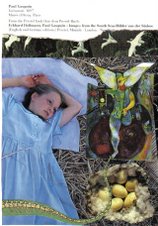
About Me

- Theresa Williams
- Northwest Ohio, United States
- "I was no better than dust, yet you cannot replace me. . . Take the soft dust in your hand--does it stir: does it sing? Has it lips and a heart? Does it open its eyes to the sun? Does it run, does it dream, does it burn with a secret, or tremble In terror of death? Or ache with tremendous decisions?. . ." --Conrad Aiken
Followers
Facebook Badge
Search This Blog
Favorite Lines
My Website
Epistle, by Archibald MacLeish
Visit my Channel at YouTube
Great Artists
www.flickr.com
This is a Flickr badge showing public photos from theresarrt7. Make your own badge here.
Fave Painting: Eden
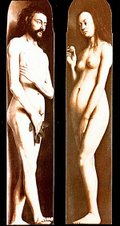
Fave Painting: The Three Ages of Man and Death

by Albrecht Dürer
From the First Chapter
The Secret of Hurricanes : That article in the Waterville Scout said it was Shake- spearean, all that fatalism that guides the Kennedys' lives. The likelihood of untimely death. Recently, another one died in his prime, John-John in an airplane. Not long before that, Bobby's boy. While playing football at high speeds on snow skis. Those Kennedys take some crazy chances. I prefer my own easy ways. Which isn't to say my life hasn't been Shake-spearean. By the time I was sixteen, my life was like the darkened stage at the end of Hamlet or Macbeth. All littered with corpses and treachery.
My Original Artwork: Triptych
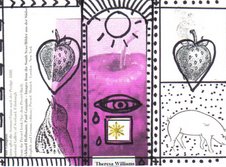
Wishing
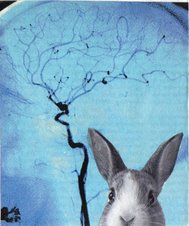
Little Deer
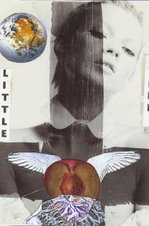
Transformation
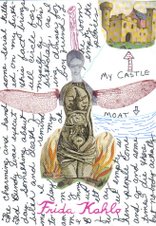
Looking Forward, Looking Back
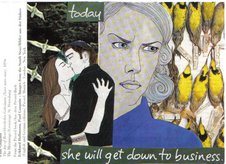
CURRENT MOON
Labels
- adolescence (1)
- Airstream (7)
- Alain de Botton (1)
- all nighters (2)
- Allen (1)
- altars (1)
- Angelus Silesius (2)
- animals (1)
- Annie Dillard (1)
- Antonio Machado (2)
- AOL Redux (1)
- April Fool (1)
- Archibald MacLeish (1)
- arts and crafts (55)
- Auden (1)
- awards (2)
- AWP (2)
- Bach (1)
- Basho (5)
- Beauty and the Beast (1)
- birthdays (1)
- blogs (5)
- boats (2)
- body (2)
- books (7)
- bookstores (1)
- Buddha (1)
- Buddha's Little Instruction Book (2)
- butterfly (4)
- buzzard (2)
- Capote (4)
- Carmel (1)
- Carson McCullers (1)
- cats (15)
- Charles Bukowski (1)
- Charles Simic (2)
- Christina Georgina Rossetti (1)
- church (2)
- confession (1)
- Conrad Aiken (1)
- cooking (5)
- crows (1)
- current events (2)
- D. H. Lawrence (3)
- death (6)
- Delmore Schwartz (4)
- detachment (1)
- dogs (7)
- domestic (3)
- dreams (21)
- Edward Munch (4)
- Edward Thomas (1)
- Eliot (3)
- Eliot's Waste Land (2)
- Emerson (2)
- Emily Dickinson (10)
- ephemera (1)
- Esalen (6)
- essay (3)
- Eugene O'Neill (3)
- Ezra Pound (1)
- F. Scott Fitzgerald (1)
- fairy tales (7)
- Fall (16)
- Famous Quotes (16)
- festivals (2)
- fire (5)
- Floreta (1)
- food (1)
- found notes etc. (1)
- found poem (2)
- fragments (86)
- Frida Kahlo (1)
- frogs-toads (4)
- Georg Trakl (1)
- gifts (1)
- Global Warming (1)
- Gluck (1)
- goats (1)
- Goodwill (1)
- Great lines of poetry (2)
- Haibun (15)
- haibun moleskine journal 2010 (2)
- Haiku (390)
- Hamlet (1)
- Hart Crane (4)
- Hayden Carruth (1)
- Henry Miller (1)
- holiday (12)
- Hyman Sobiloff (1)
- Icarus (1)
- ikkyu (5)
- Imagination (7)
- Ingmar Bergman (1)
- insect (2)
- inspiration (1)
- Issa (5)
- iTunes (1)
- Jack Kerouac (1)
- James Agee (2)
- James Dickey (5)
- James Wright (6)
- John Berryman (3)
- Joseph Campbell Meditation (2)
- journaling (1)
- Jung (1)
- Juniper Tree (1)
- Kafka (1)
- Lao Tzu (1)
- letters (1)
- light (1)
- Lorca (1)
- Lorine Niedecker (2)
- love (3)
- Lucille Clifton (1)
- Marco Polo Quarterly (1)
- Marianne Moore (1)
- Modern Poetry (14)
- moon (6)
- movies (20)
- Muriel Stuart (1)
- muse (3)
- music (8)
- Mystic (1)
- mythology (6)
- nature (3)
- New Yorker (2)
- Nietzsche (1)
- Northfork (2)
- November 12 (1)
- October (6)
- original artwork (21)
- original poem (53)
- Our Dog Buddha (6)
- Our Dog Sweet Pea (7)
- Our Yard (6)
- PAD 2009 (29)
- pad 2010 (30)
- Persephone (1)
- personal story (1)
- philosophy (1)
- Phoku (2)
- photographs (15)
- Picasso (2)
- Pilgrim at Tinker Creek (1)
- Pillow Book (5)
- Pinsky (2)
- plays (1)
- poem (11)
- poet-seeker (9)
- poet-seer (6)
- poetry (55)
- politics (1)
- poppies (2)
- presentations (1)
- Provincetown (51)
- Publications (new and forthcoming) (13)
- rain (4)
- Randall Jarrell (1)
- reading (6)
- recipes (1)
- Reciprocity (1)
- Richard Brautigan (3)
- Richard Wilbur (2)
- Rilke (5)
- river (5)
- river novel (1)
- rivers (12)
- Robert Frost (2)
- Robert Rauschenberg (1)
- Robert Sean Leonard (1)
- Robinson Jeffers (1)
- Rollo May (2)
- Rumi (1)
- Ryokan (1)
- Sexton (1)
- short stories (13)
- skeletons (2)
- sleet (1)
- snake (1)
- Snow (24)
- solitude (1)
- spider (2)
- spring (1)
- Stanley Kunitz (1)
- students (2)
- suffering (4)
- suicide (2)
- summer (20)
- Sylvia Plath (2)
- Talking Writing (1)
- Tao (3)
- teaching (32)
- television (4)
- the artist (2)
- The Bridge (3)
- The Letter Project (4)
- The Shining (1)
- Thelma and Louise (1)
- Theodore Roethke (16)
- Thomas Gospel (1)
- Thomas Hardy (1)
- toys (3)
- Transcendentalism (1)
- Trickster (2)
- Trudell (1)
- Ursula LeGuin (1)
- vacation (10)
- Vermont (6)
- Virginia Woolf (1)
- Vonnegut (2)
- Wallace Stevens (1)
- Walt Whitman (8)
- weather (7)
- website (3)
- what I'm reading (2)
- William Blake (2)
- William Butler Yeats (5)
- wind (3)
- wine (2)
- winter (24)
- wood (3)
- Writing (111)
- Zen (1)





No comments:
Post a Comment